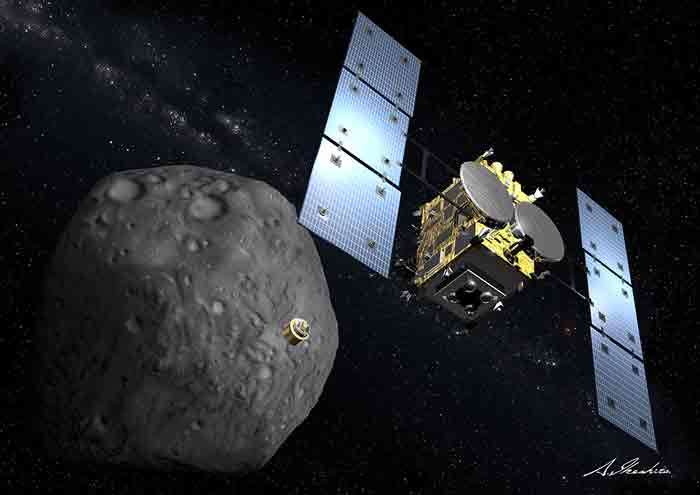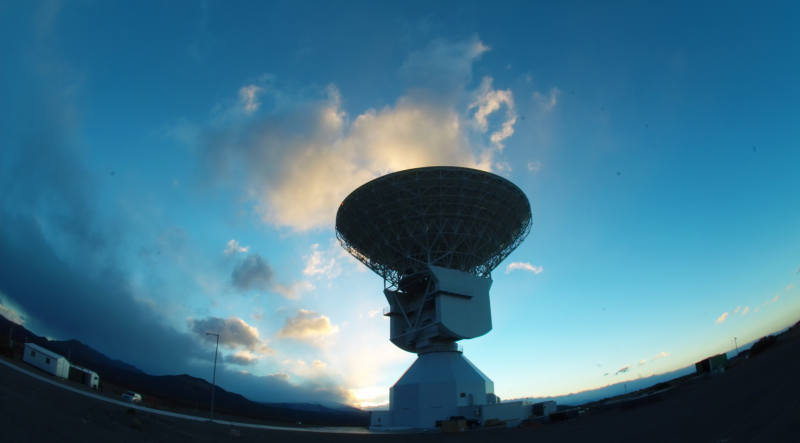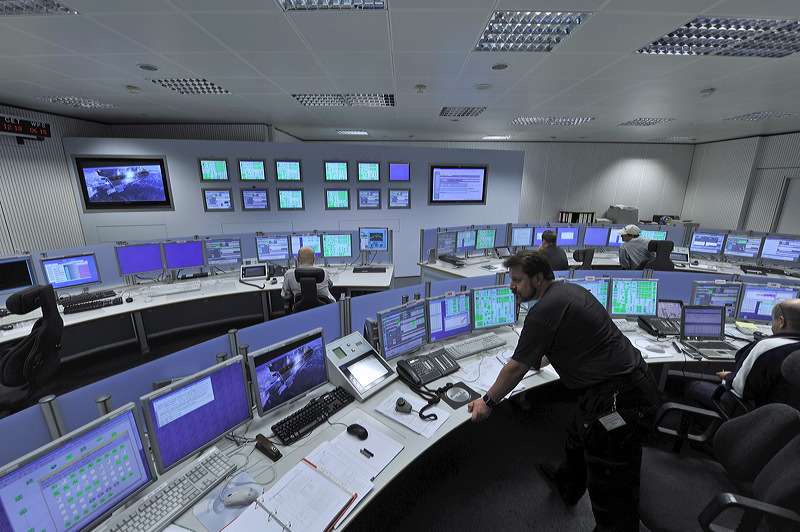Tracking Japan's asteroid impact mission

ESA is set to support Japan's 'touch-and-go' Hayabusa-2 spacecraft, now en route to a little-known asteroid, helping to boost the scientific return from this audacious mission.
A flawless launch last December marked the start of a six-year round-trip for Japan's Hayabusa-2, which is on course to arrive at the carbon-rich asteroid 1999 JU3 in June 2018.
Once there, it will study the surface in detail in preparation for dispatching three diminutive landing drones. It will also deliver the Mascot lander, developed by the DLR German Aerospace Center in cooperation with France's CNES space agency and equipped with a 'hopper' mechanism to enable it to explore the tiny world from multiple locations.
Hayabusa will also use explosives to fire a copper impactor into the 980 m-diameter asteroid, then scoop up the debris fragments in a complex touch-and-go manoeuvre. The fragments will be returned to Earth in 2020.
Tracking deep in space
In the first such support provided to a Japanese deep-space mission, ESA's 35 m-diameter dish at Malargüe, Argentina, will provide up to 400 hours of tracking, establishing radio contact as the asteroid arcs through the Solar System between 135 million to 210 million km from the Sun.

Telecommands from mission controllers at the Japan Aerospace and Exploration Agency (JAXA) will be fed to the station via ESOC, ESA's European Space Operations Centre, Germany.
The sophisticated technology and location of ESA's station will enable Hayabusa-2 to deliver significantly more science data and provide coverage when Japanese stations are out of visibility.
In the past, ESOC has supported JAXA's Earth and astronomy missions, including Oicets and Astro-F.
"This is the first time we've supported a Japanese deep-space mission, so we've been working closely with JAXA in the past months to establish technical links between the ground station and the Hayabusa mission systems," said Maite Arza, ESA's Service Manager for Hayabusa at ESOC.

World-class tracking technology
Together with similar stations in Spain and Australia, the Malargüe site comprises the deep-space tracking capability of ESA's Estrack network.
Estrack's global system of ground stations provides links between spacecraft in orbit and control teams on Earth. The network is controlled from ESOC, and provides tracking support to ESA and partner agency missions 24 hours/day, 365 days/year. The network will celebrate its 40th anniversary this year.
"On 22 April, we completed a live, inflight compatibility test, linking Malargüe with the Japanese spacecraft, demonstrating that we're ready to provide tracking for the incredible Hayabusa-2 mission," says Maite.
"We look forward to helping our Japanese colleagues explore asteroid 1999 JU3, demonstrate advanced technology and achieve some excellent scientific results."
Provided by European Space Agency





















